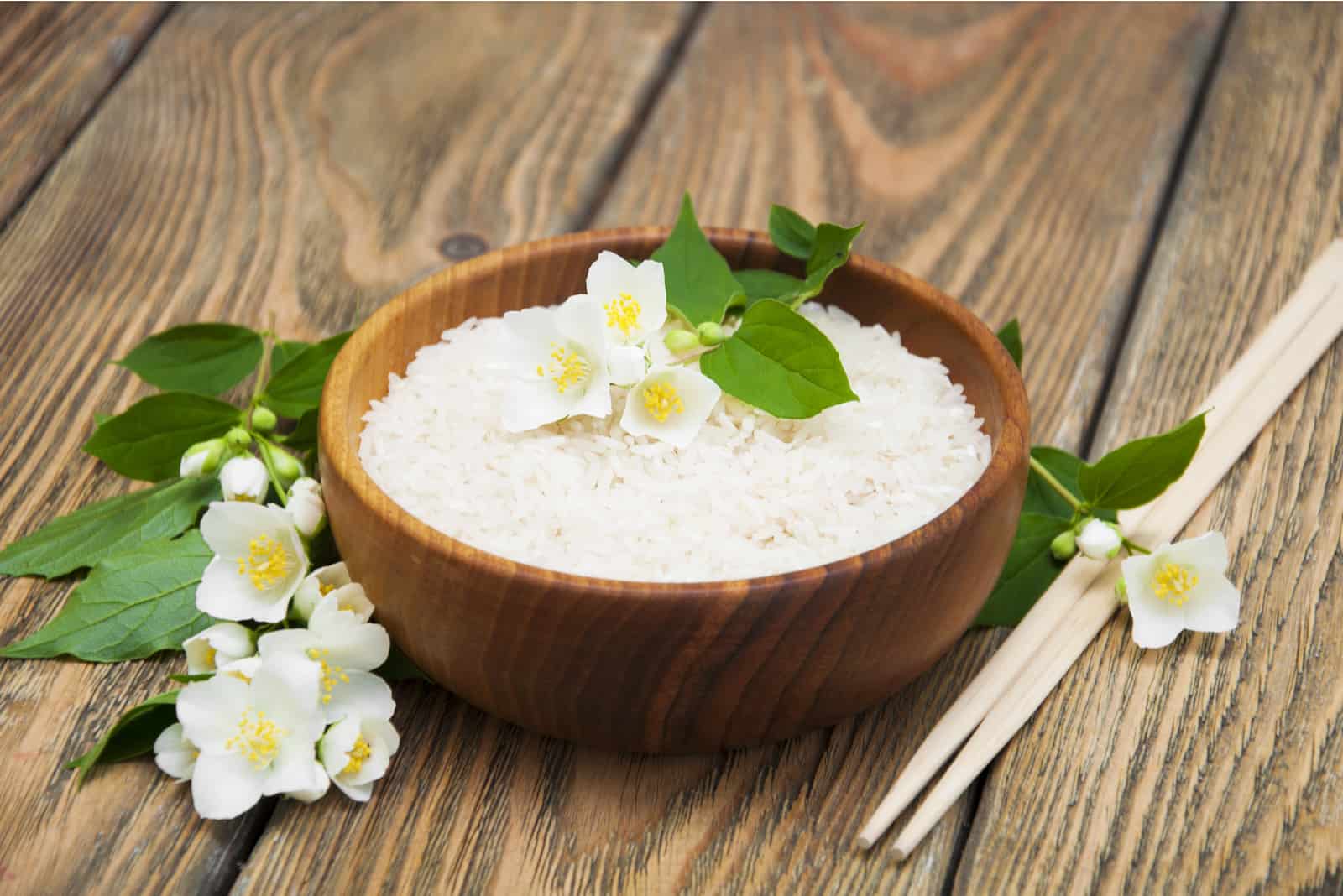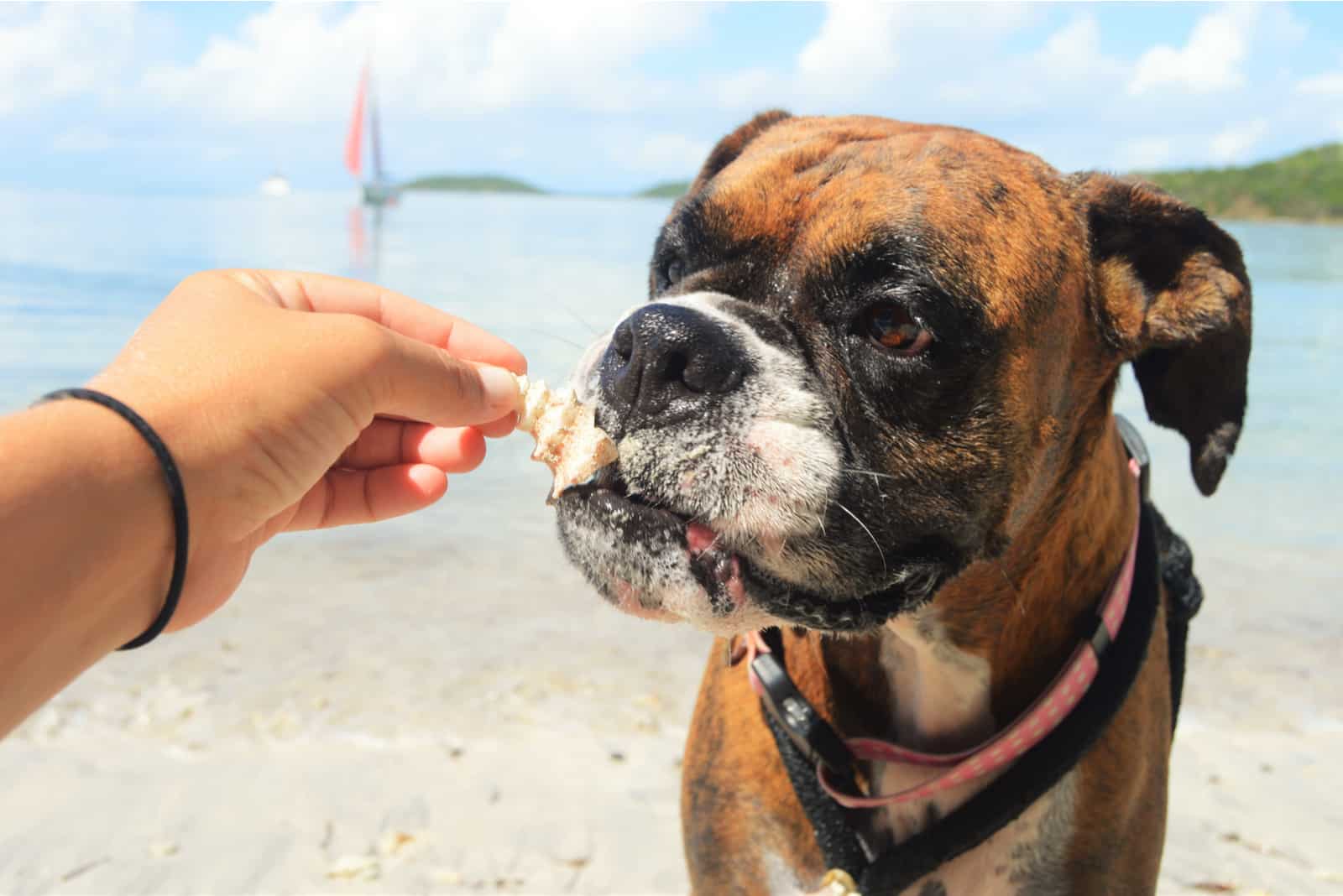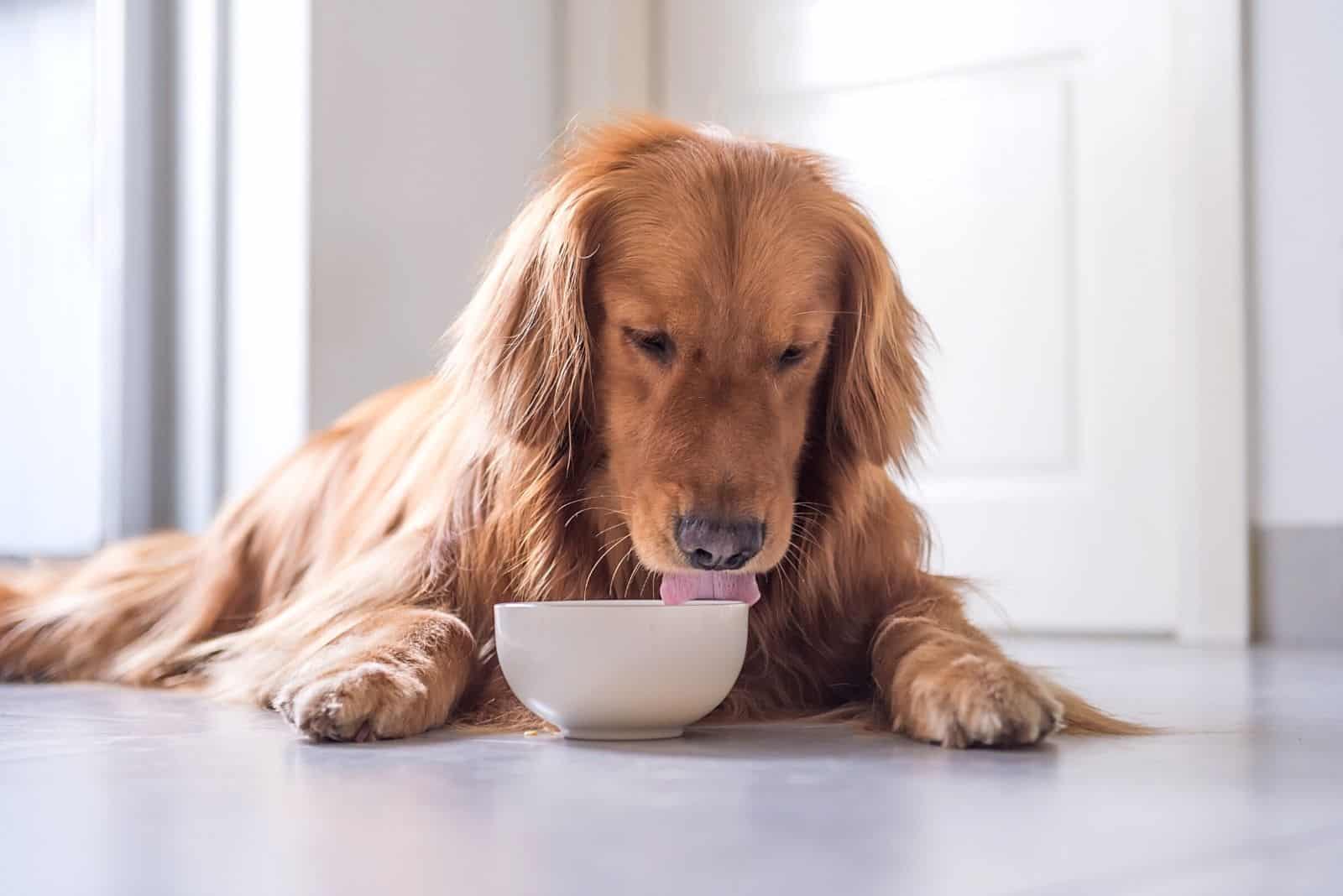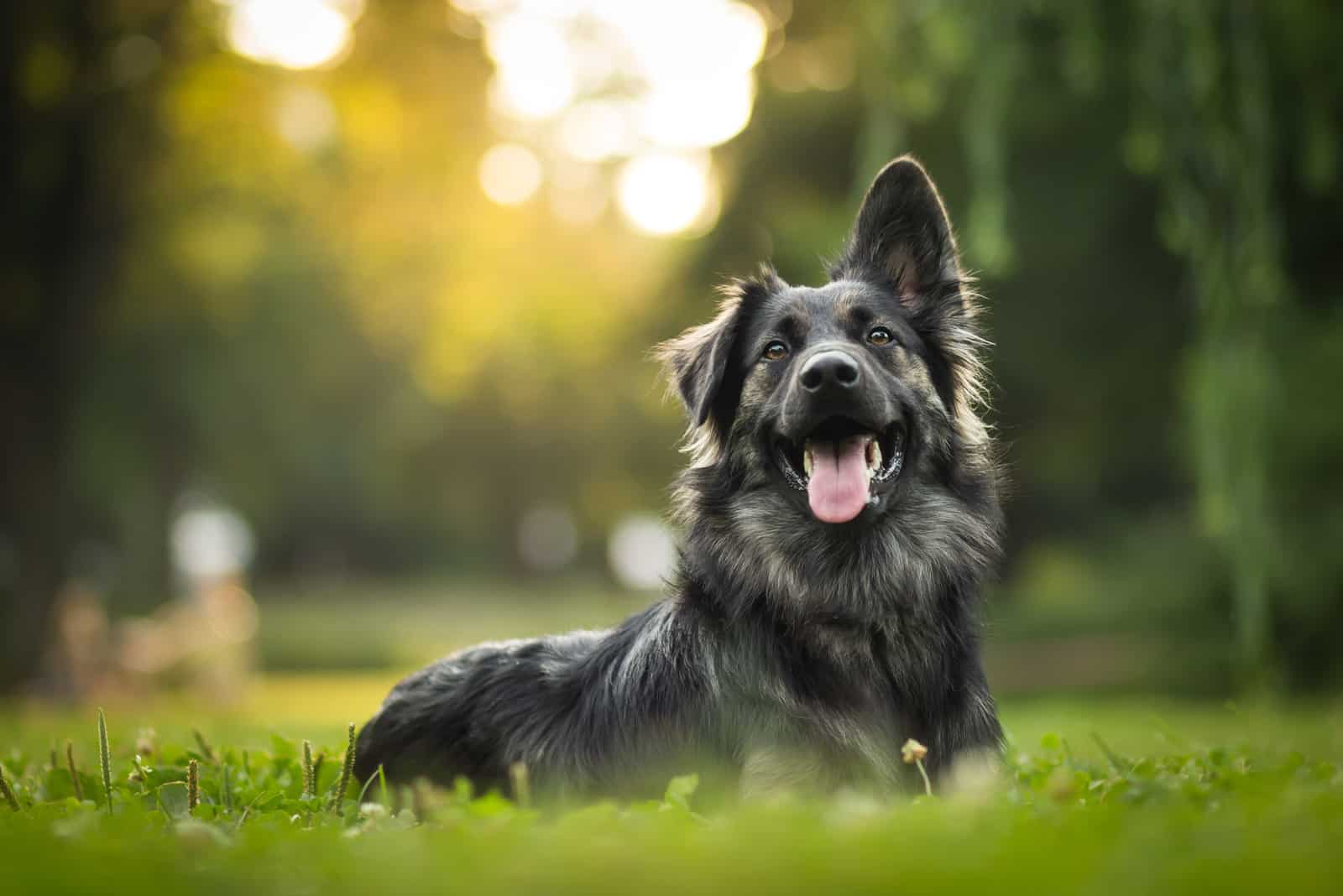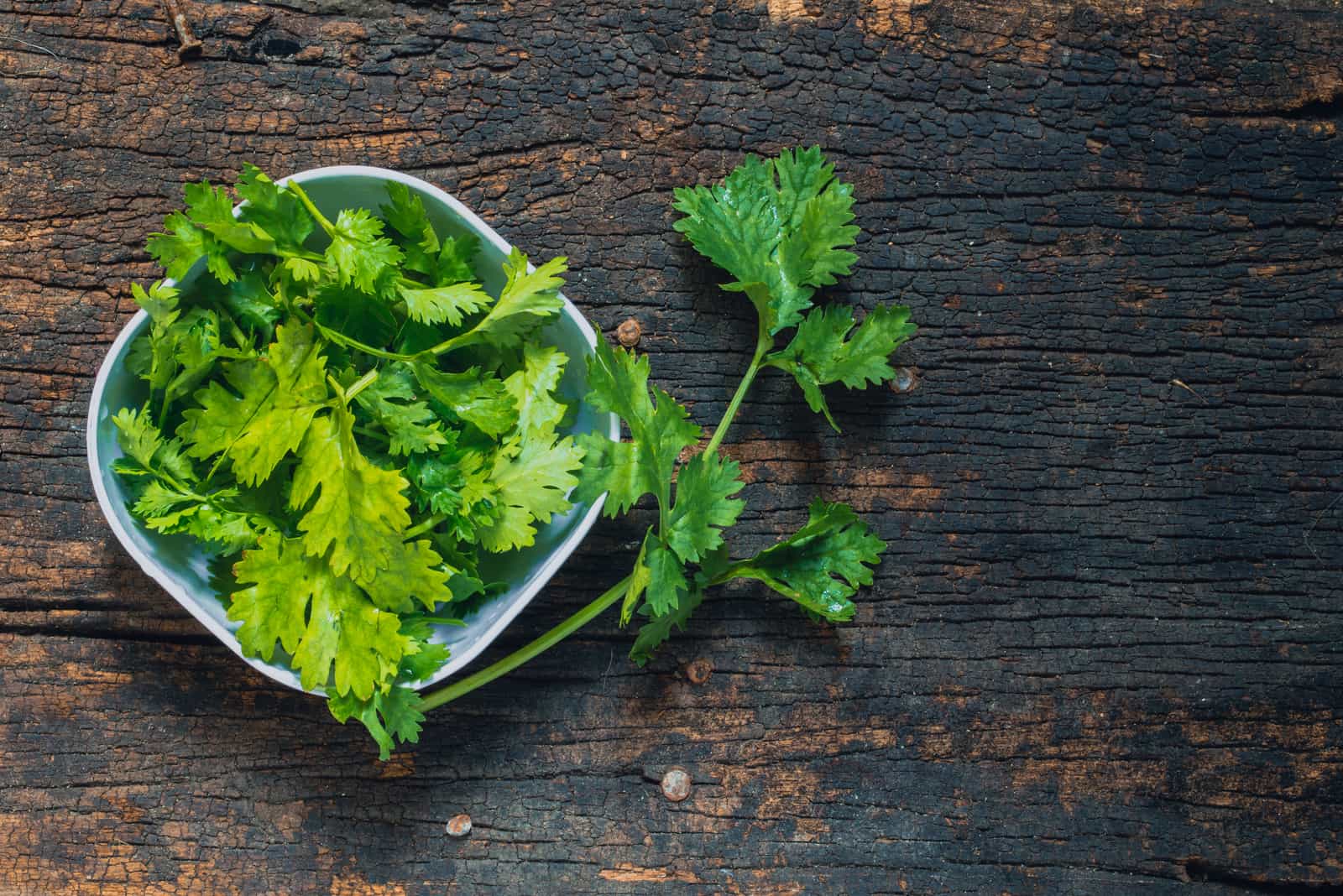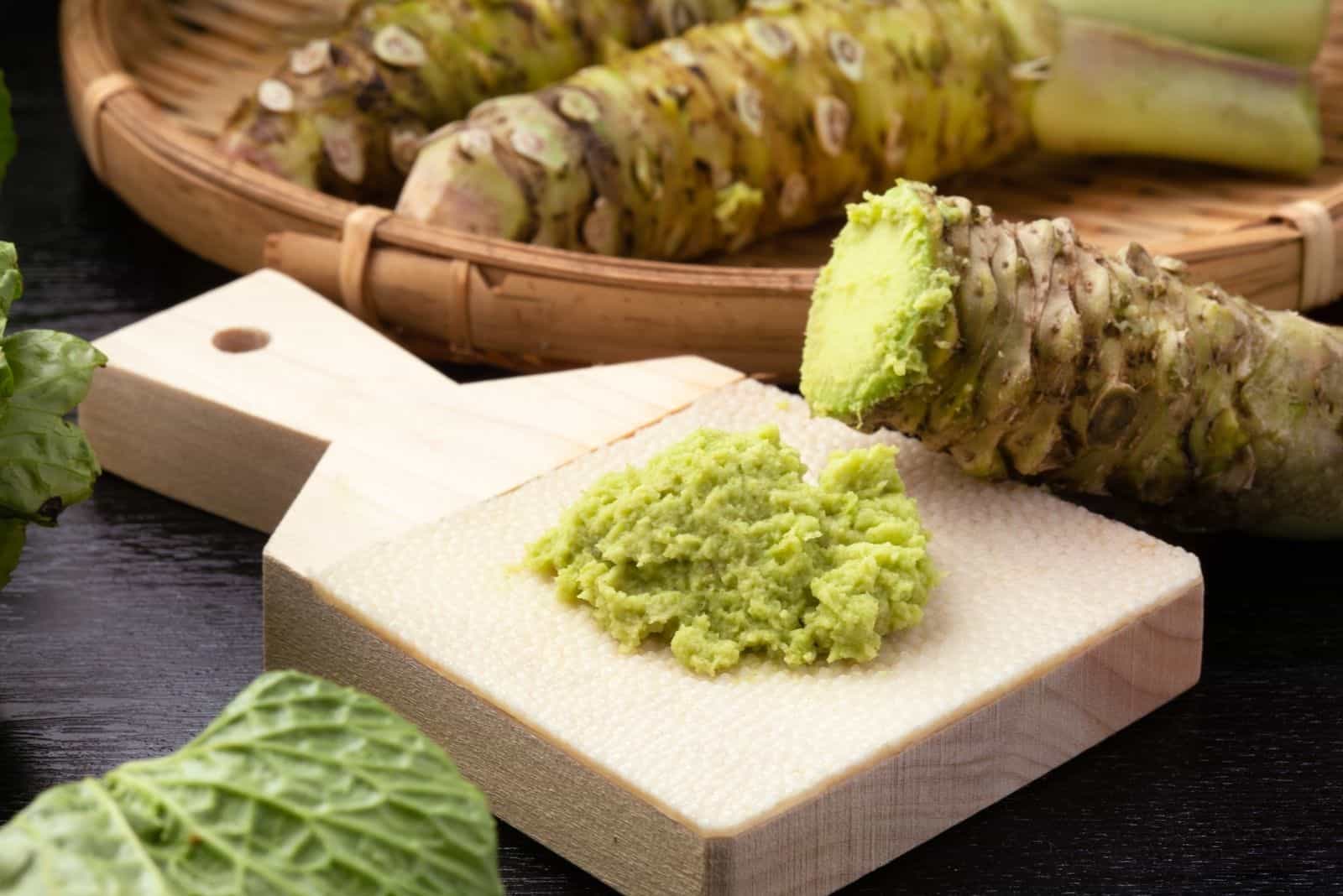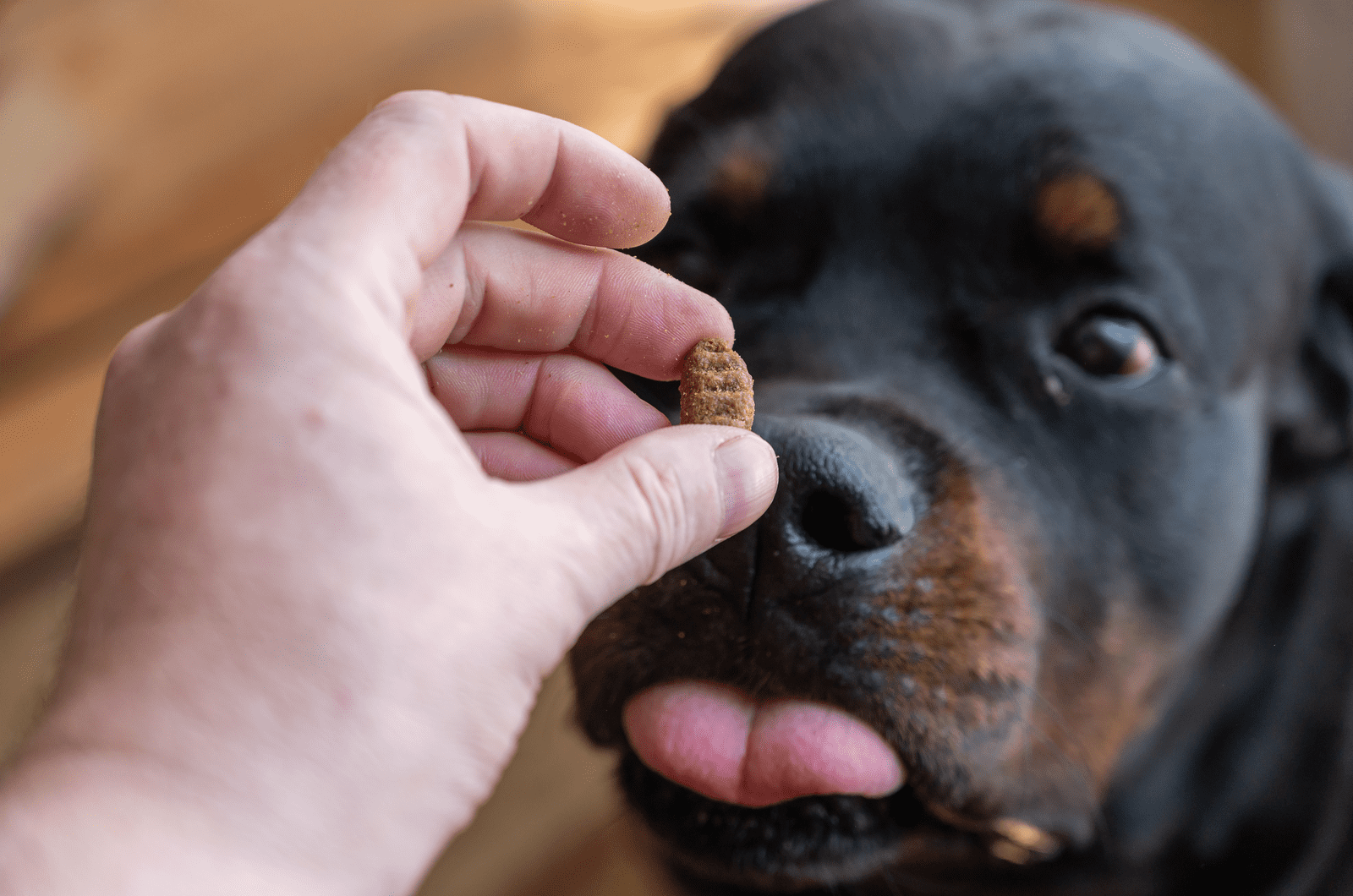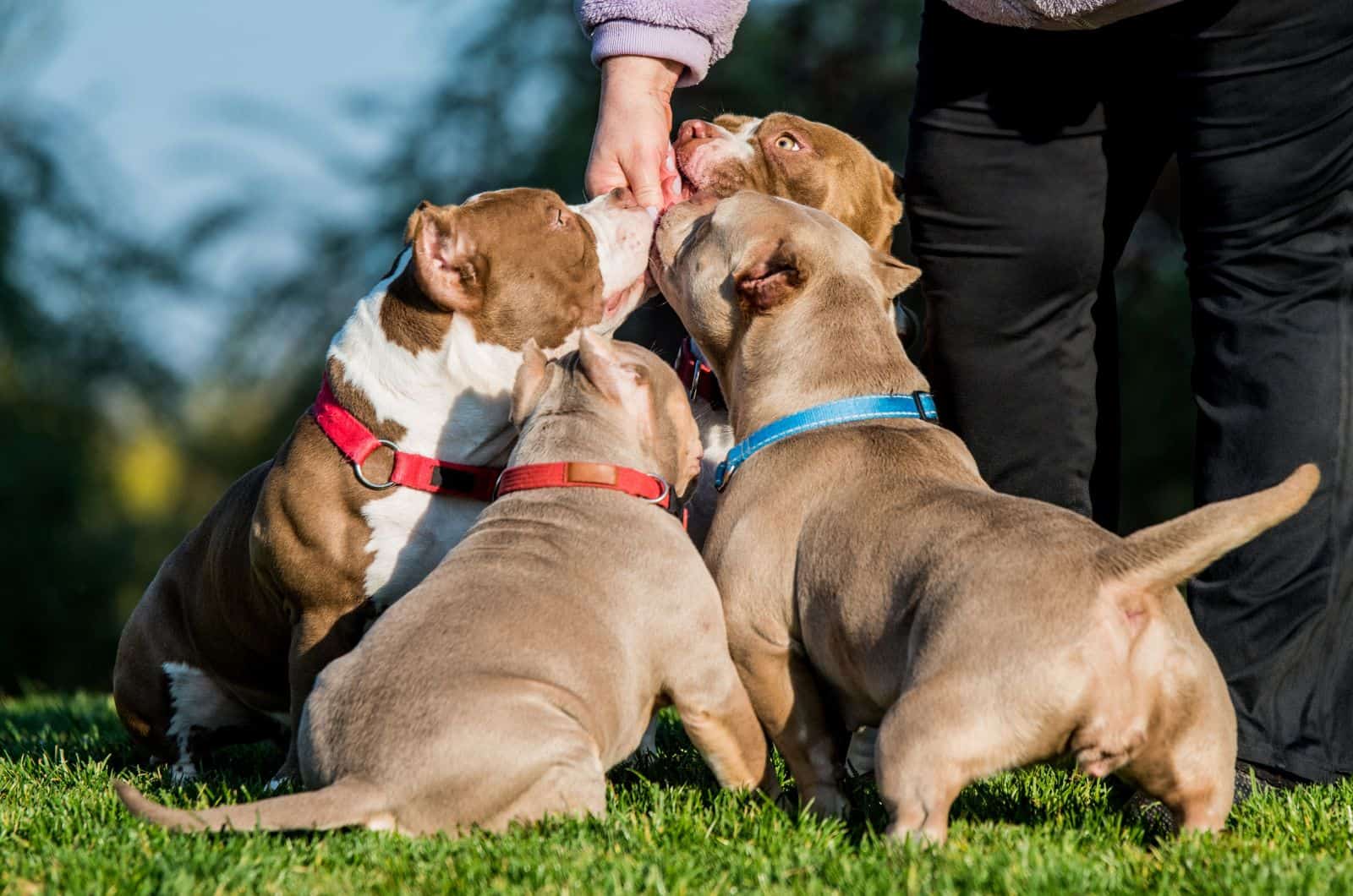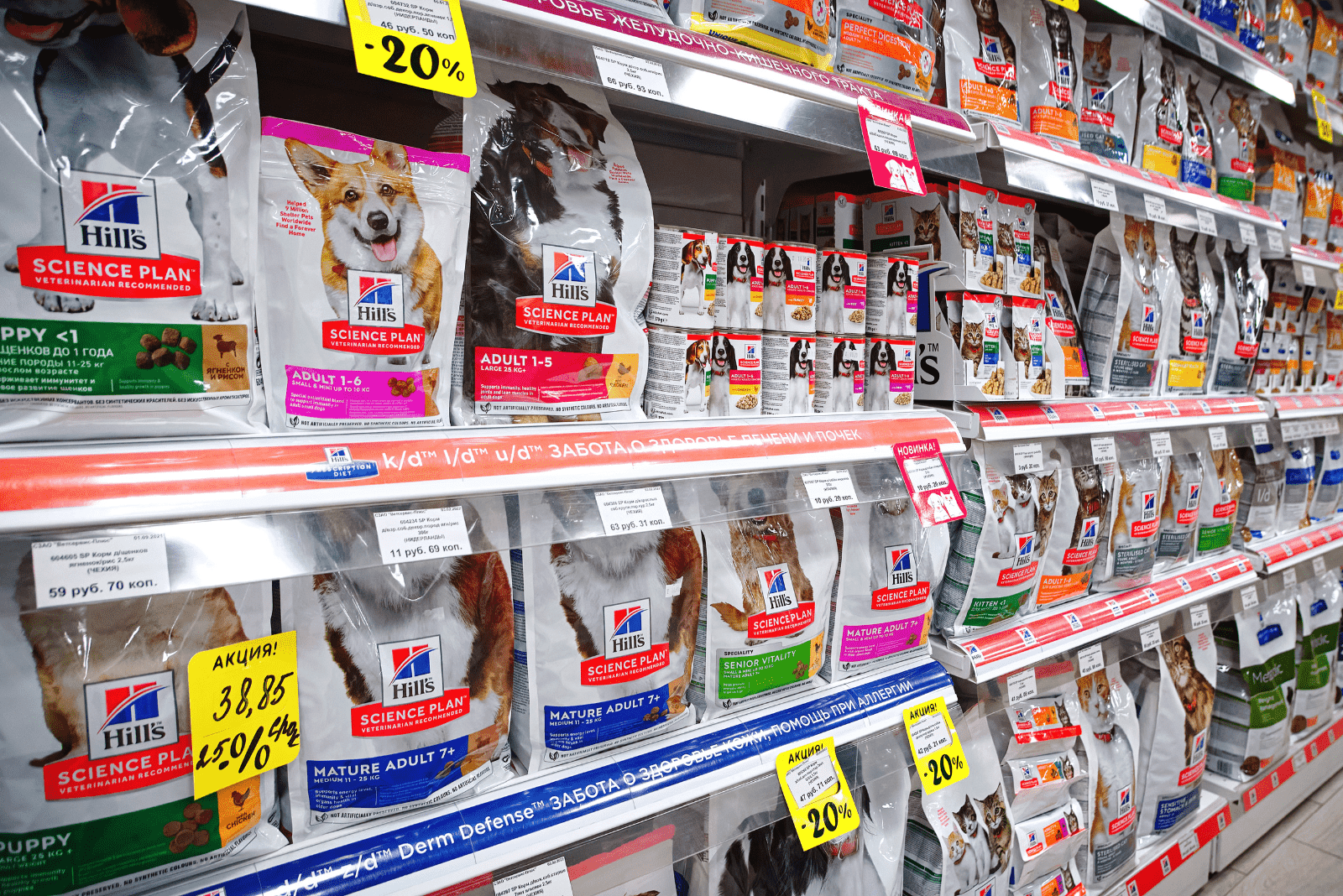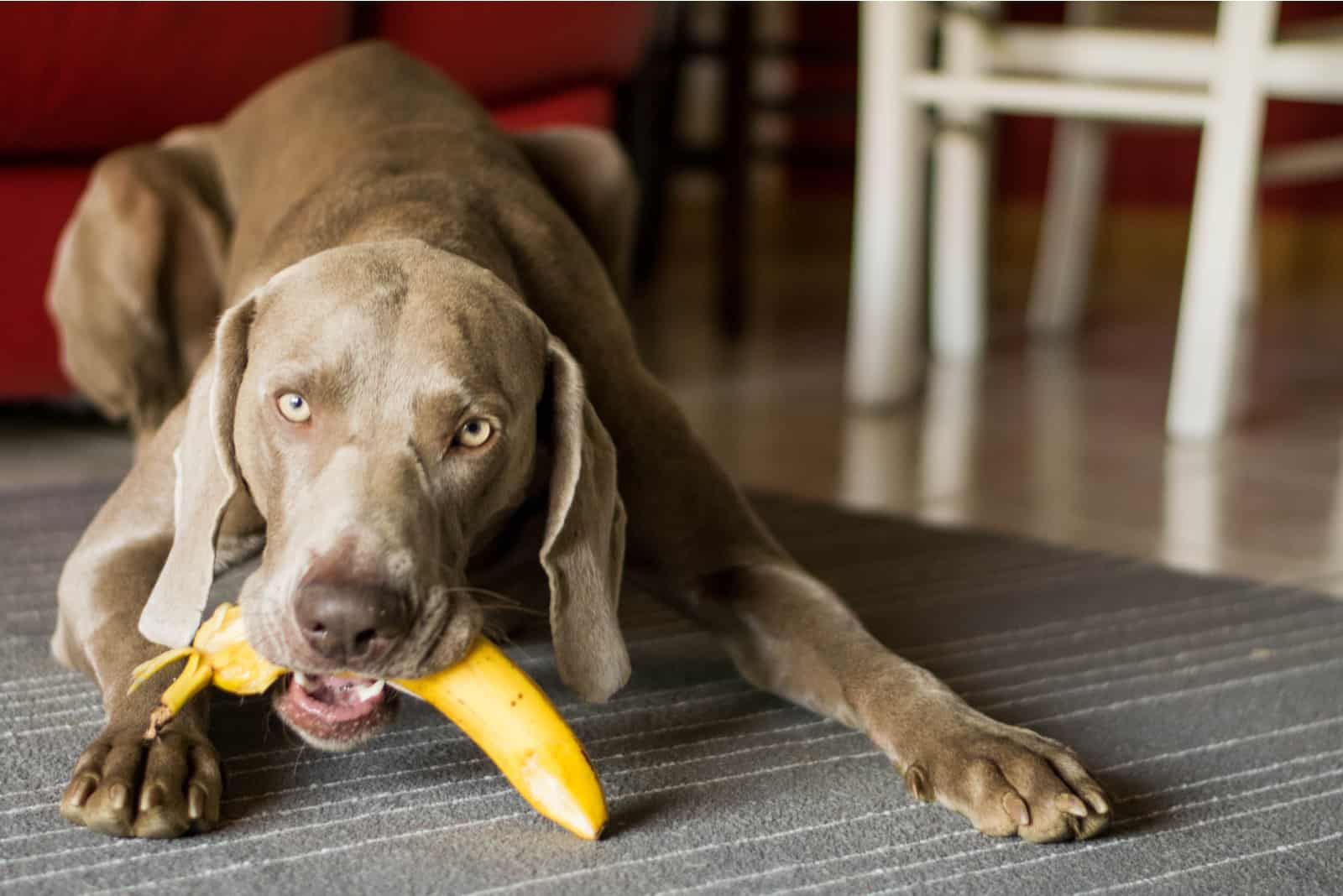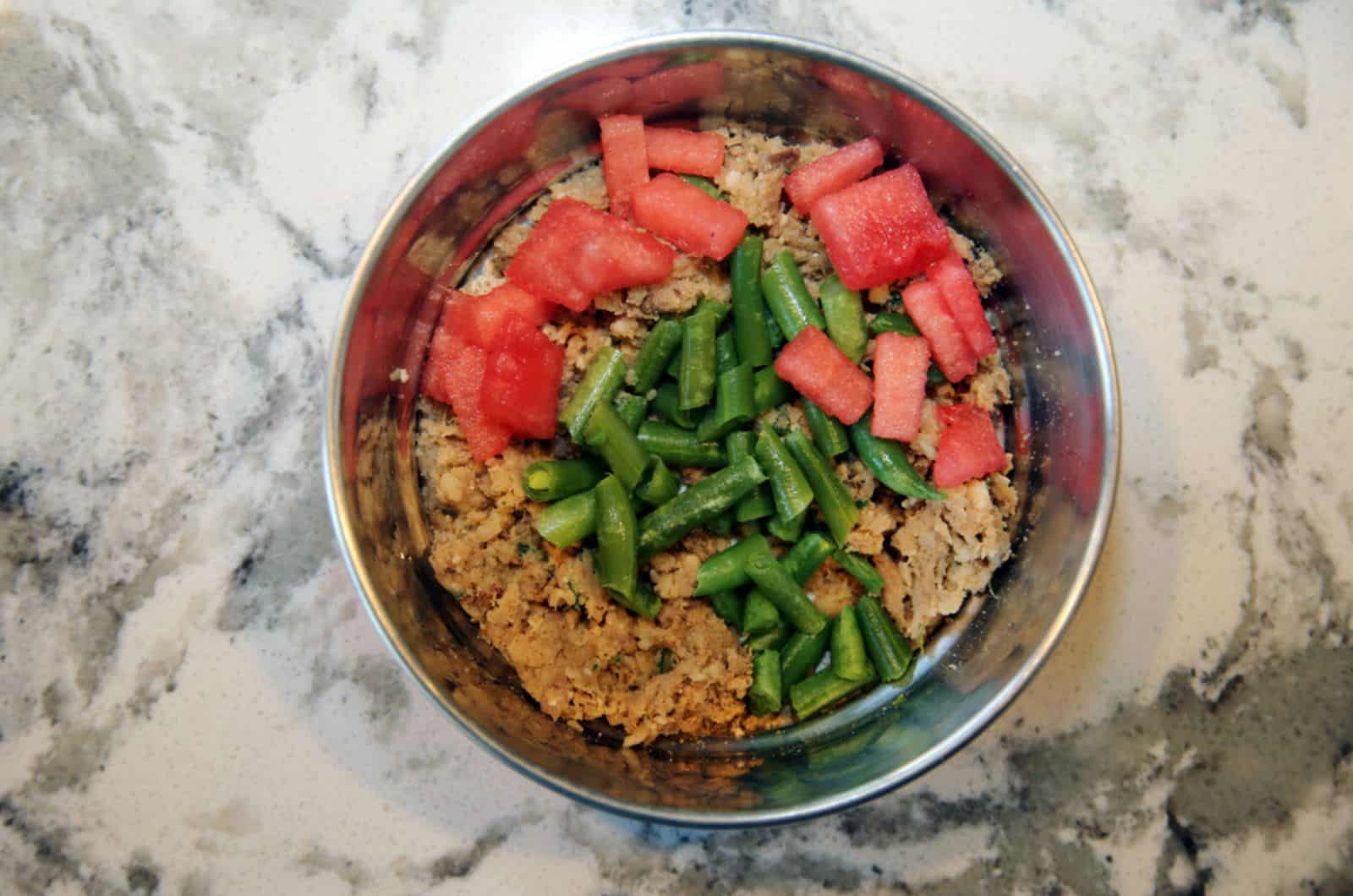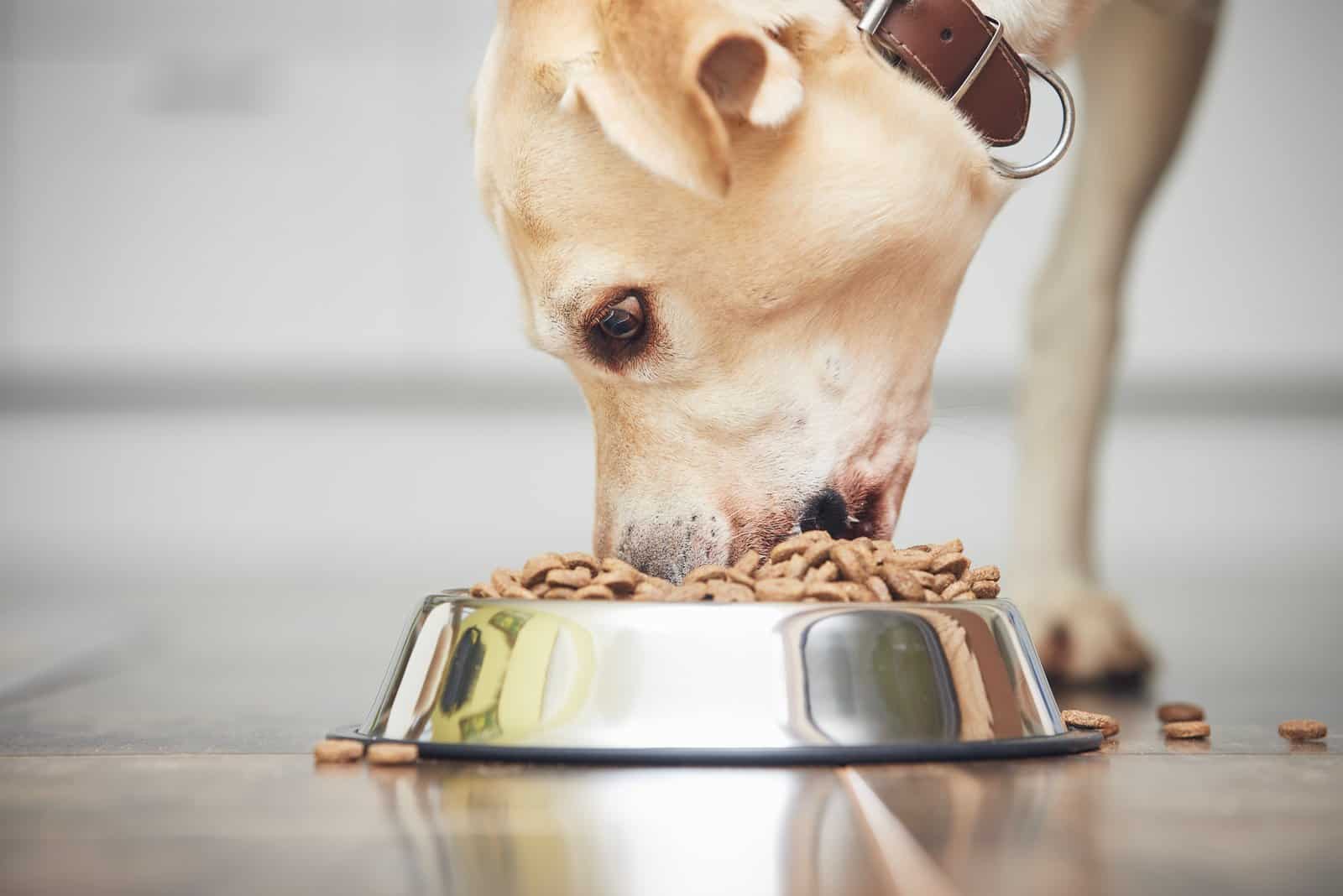You are probably here to start your raw-feeding puppy journey, and we’re here to make your life easier.
You probably have many questions about pet food, feeding guidelines, and health concerns.
How much raw food to feed a puppy depends on a variety of things such as your pup’s age, metabolism, energy levels, and weight.
You will want to know exactly what the amount of food is appropriate for your dog in order to maintain healthy development.
If you have ever had both an adult dog and a puppy, you will realize that they do not need to same amount of food. The little ones need around three to ten percent of their body weight, whereas adults’ needs fall anywhere between two to five percent because they have stopped developing.
In this article, we will explore how much raw food to feed a puppy among many other things concerning a raw food diet that you must get right in order for your pup to be feeding correctly. The last thing we want on our hands is an unhealthy puppy!
How Much Should I Feed My Raw-Fed Puppy?
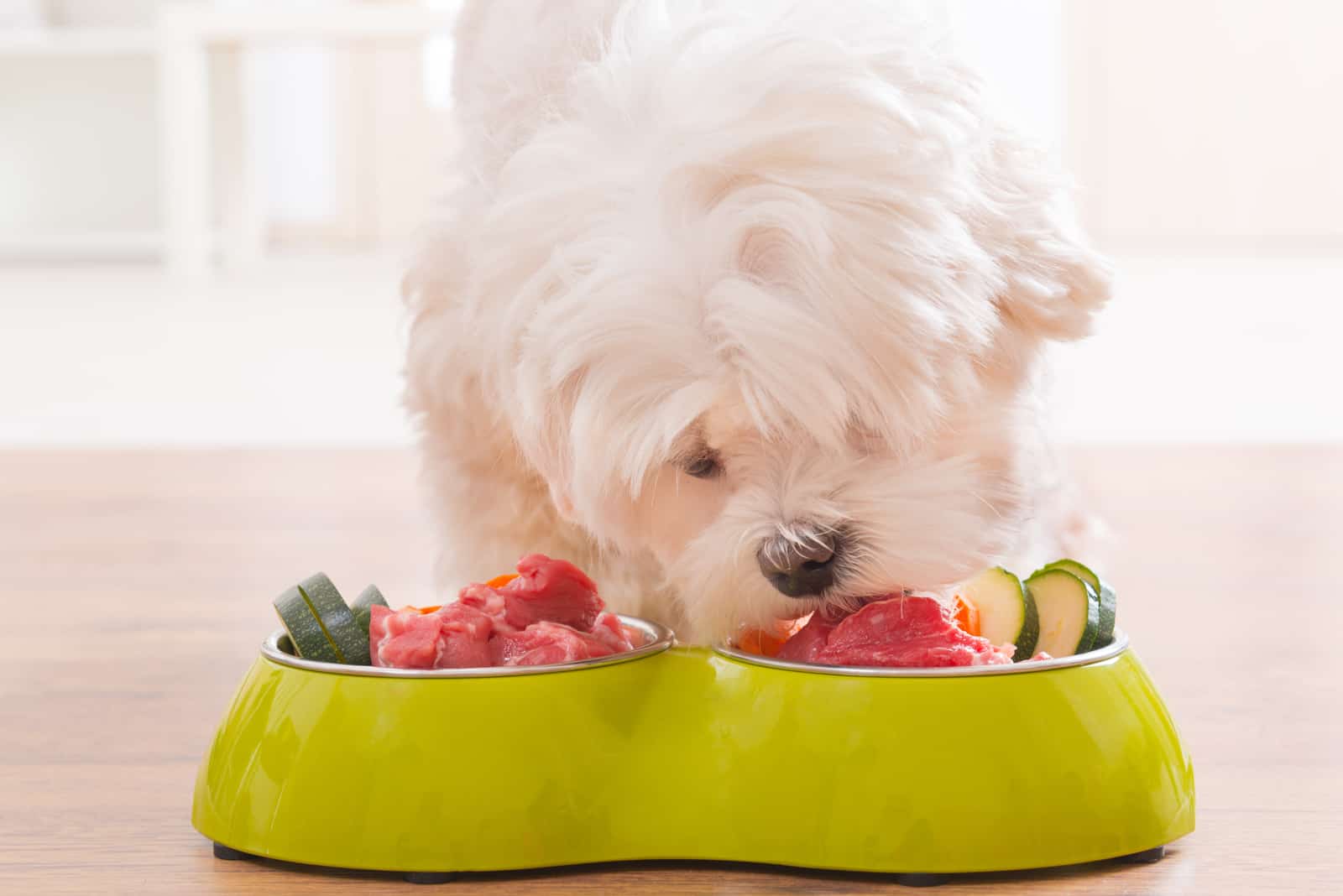
There are a couple of things you want to consider when you are thinking about how much raw food to feed a puppy.
Even though puppies are small, they need a lot of food to remain healthy and active.
A puppy’s life is always a blend of much play and much rest, since it always needs to refuel before starting the play process all over again in order to develop properly.
At first, you might think the solution is to always provide your puppy endless amounts of food—also known as free feeding—but that is generally not recommended.
The special thing about raw food is that it takes much less time for the food to become contaminated because it has not been treated with additional preservatives.
Imagine the disaster a contamination would ensue! Hello, puppy diarrhea at night, am I right?
Another issue is that although puppies are pretty great at regulating their own food-intake, there is still a real harm of weight gain, which we do not want to promote in these little fur babies.
Instead, let’s examine ways we can plan their meals to ensure healthier eating habits.
Consider Weight
The best way you can plan for your new puppy’s meals when it comes to daily feeding is to consider its weight and age.
It might seem a bit complicated at first because you need to calculate the amount of food based on its weight, but it is the only way you can ensure that your pup is getting the nutrients it needs in order to thrive.
Puppies are known to gain weight quite quickly, so if you want to turn your pup into a raw feeder, you will have to modify its food intake based on its size, which can double just a few months after it is born.
Volume has nothing to do with how much food you should be giving your dog—what you want to be looking at is food weight instead.
During the first year of its life, you want to ensure that your pup is getting between three to ten percent of its own body weight worth of food every day.
All you have to do is multiply your little one’s current weight with the decimal of the percentage.
You might have a puppy that weighs 15 lbs., and you want to figure out how much you should be feeding it.
If your pup needs 5% of its body weight, all you need to do is multiply 15 and 0.05 to receive the amount of food it needs in the unit of initial body weight (whether it is kilograms, grams, or pounds).
In our example, that would be 15 x 0.05 = 0.75 pounds.
Other Factors To Consider
Weight is definitely up there when it comes to considering how to feed your dog raw dog food, but there are other things you might want to think about when you want to plan your puppy’s meals.
Like we mentioned in our introduction, how much raw food to feed a puppy depends on its energy levels as well as its body condition.
If you have a puppy that is especially active, it won’t come as much of a surprise that you will have to supply extra weight to your puppy’s raw food bowl. It will need the extra calories to make up for the energy that it burned away.
If your puppy’s activity level can be compared to a couch potato, you will have to make sure not to overfeed your pup with raw pet food.
If your pup has a quick metabolism and seems underweight, it will definitely need more calories. On the other hand, if you have a pooch who burns off calories really slowly, you might want to have it lay off on the extra treats.
The great thing though is that most puppies are really good at managing how much food they need, so even if you serve the amount it needs, it might sometimes leave some food behind because it doesn’t need it.
Why Should I Feed My Pup A Raw Food Diet?

The truth of the matter is that raw food diets are probably the best out there for our adorable little ones when it comes to not only taste but the nutrition itself.
The wet and dry food (such as dry kibble) you find on the market is just incomparable to a raw food diet. When a dog owner learns how to boil chicken for dogs and serves it to their pooch, some want to switch over to raw meals entirely.
However, you must be careful when trying to feed your puppy a raw food diet because it is very easy to do it wrong and damage your pup’s health. You have to make sure you get all of the details right before you begin implementing a raw diet for your puppy.
Since puppies’ body condition depends a lot on how you feed them, make sure to always check with your vet before you make any drastic changes in your young puppies’ lives.
How Often Should I Feed My Puppy?
Try working at around four meals a day and slowly decreasing that number by the time your pup is an adult. At this time you will probably feed your adult dog twice a day. This doesn’t apply to newborn pups that are completely reliant on their mother’s milk.
Large breed puppies might also differ in the amount of feeding than small breed pups, just because they need more nutrients to develop properly, especially when it comes to components such as calcium.
Raw Diet Feeding Guide
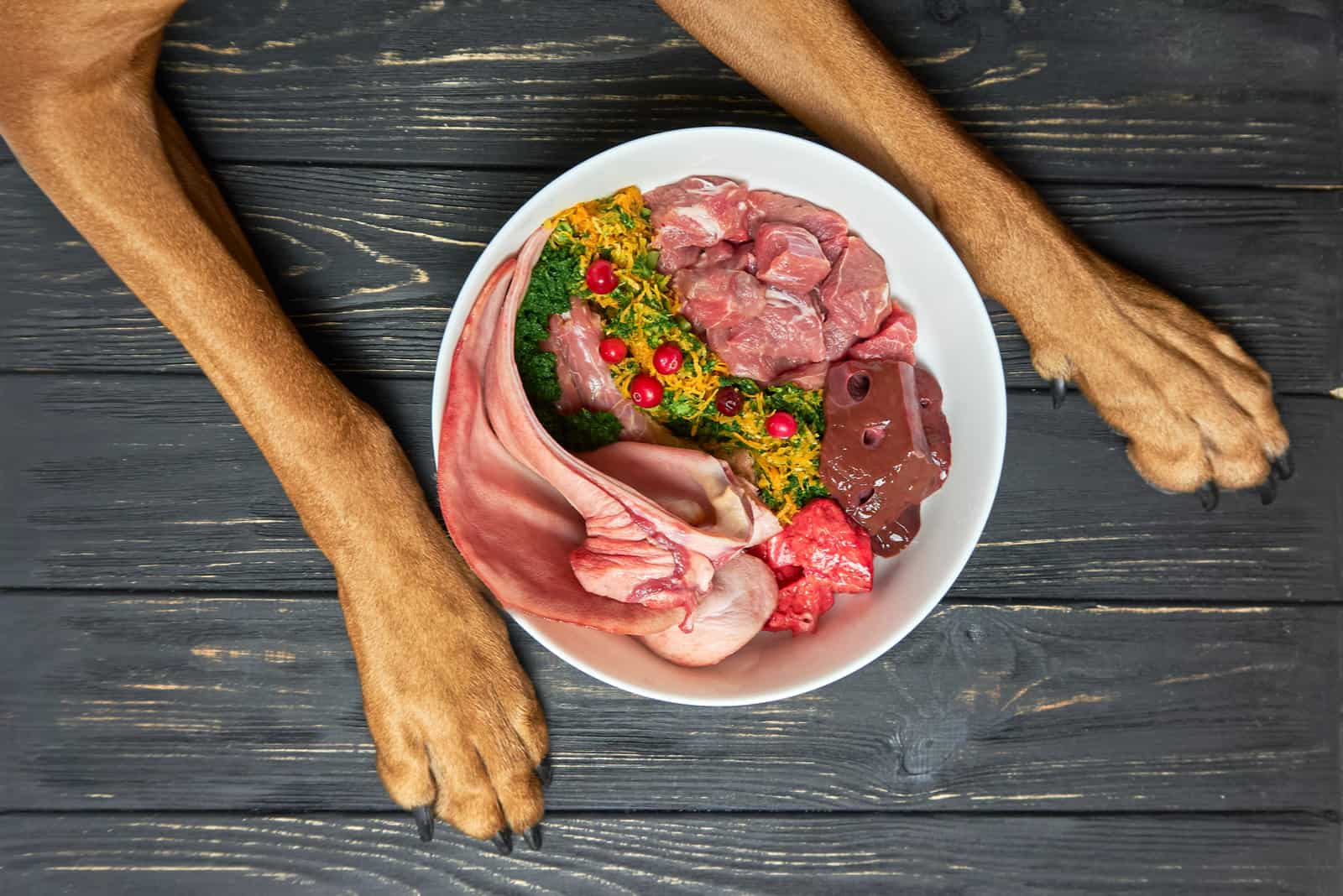
Down below we have provided an easy-to-follow feeding schedule for you so you know how much raw food to feed a puppy when you start a raw food diet.
0 – 4 Months Old
This is a period of many transitions, but after your pup has weaned off of it’s mother’s milk, you want to feed it around eight to ten percent of their body weight every day (considering of course its energy levels and body condition, as we have mentioned before)
Spread this amount to four meals a day. This is the perfect balance between meals if you are having second thoughts on how much to feed your 8-week old pup.
When you begin feeding raw foods to your puppy, start with white meats like chicken/turkey/fish.
You can help with their teething process by giving them large bones to gnaw on. Avoid smaller bones, as that can seriously damage any dog if swallowed.
4 – 6 Months Old
When your pup is between four and six months of age, feed it six to eight percent of their body weight. Space out the frequency of meals and begin feeding it three times a day as opposed to four like before.
You can begin to feed it different types of food and protein sources such as raw meat like muscle meats from beef, organ meats, or pork. If you are feeling particularly adventurous, you can introduce veggies.
This is the period some dog owners begin asking questions like whether or not their pup can eat artichokes, tripe based meals, or even goat’s milk, so be prepared to do some research!
If you don’t do your research, you will start wondering if the random foods you gave your dog caused that food poisoning episode . Chocolate poisoning in dogs is not the only food poison out there, you know!
6 – 8 Months Old
At this time mark, your pup will need around four to six percent of their body weight worth of food every day. When it comes to frequency, you want to begin spacing out meals to twice a day, but do so gradually so your pup does not face a huge amount of shock to its digestive system.
There is not a particular time mark that you should enforce this new schedule—observe your dog’s needs and adjust accordingly. It might be the case that larger breeds are different from smaller ones with their requirement of raw meaty bones, so do your research!
9 – 12 Months Old
At this point, some pups reach their adult weight already, depending on if it’s a small or large breed dog (your breeder can help you figure out how large your pup’s parents were during this time period if you want to more precisely determine how much your pup should weigh).
You should only be feeding your pup between three and four percent of its body weight worth of food each day and reducing the feeding times to twice a day.
Adulthood
This is the time you should be feeding your pup twice a day as well as transitioning to adult dog food.
If you were feeding your puppy extra supplements such as calcium, fat, phosphorus, you will have to adjust these amounts so that your dog is eating a balanced diet as an adult that is best suited to its digestive and immune system.
When your dog is an adult, you should be feeding it around 2-5% of their body weight per day, divided into these two meals.
Naturally, you should decide on the amount based on your dog’s activity levels. Dogs that are more active will require more food than those who are not.
If you have a dog that is extremely active—or is perhaps even a working dog—you might want to opt to feed it 5% of their body weight.
If you have an underweight dog or a dog that is quite active (but not at the level of a working dog), you might want to feed it around 4% of their body weight.
A dog that has regular activity levels should be fed around 3% of their weight, whereas a dog that is overweight will need to be fed around 2% of its body weight in order to lose weight. If your dog is overweight, you also need to make sure you are having them get more exercise.
What Does My Puppy Need To Eat?
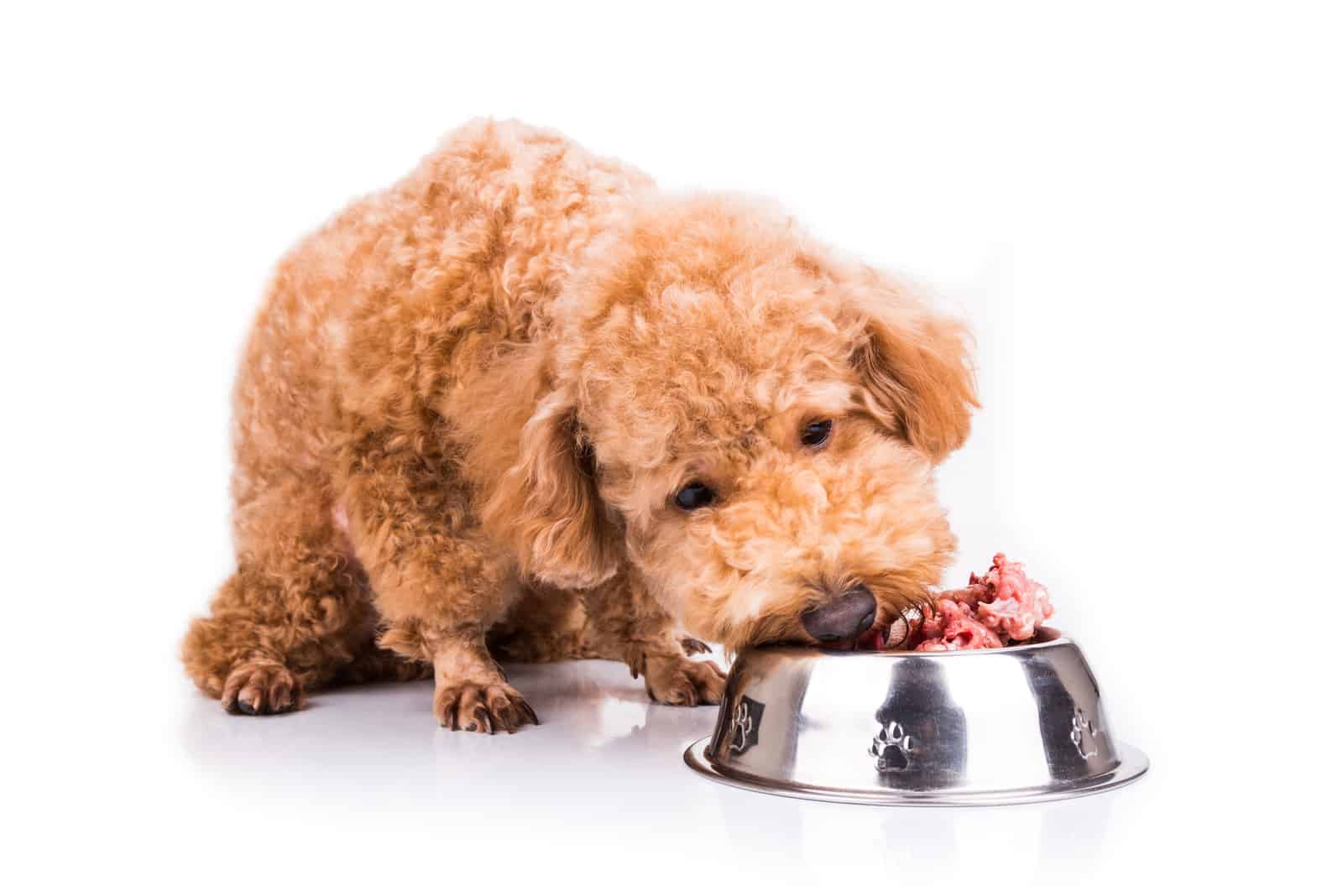
There are certain things you need to keep in mind when it comes to your pup’s dietary needs. For a growing puppy, the most important things to keep in mind are protein, fat, calcium, and phosphorus.
Protein
The emphasis on protein isn’t all that surprising, considering that the basis for muscle fiber is protein. You don’t need a vet to tell you that it is the single most important ingredient in any dog’s diet.
Because pups are developing, they need more of it than adult dogs. Your dog’s diet should have around twenty-two percent protein, which is larger than the eighteen percent that most adult dogs need.
However, you can always add more protein if necessary as long as it does not lead to any unnecessary weight gain that your pup does not need.
Fat
Your pup will need around eight percent of fat in its diet.
If you are wondering how you can implement fat in a dog’s raw food diet, you might want to introduce fish because that type of meat has a lot of good fats for your dog.
Fish also has omega fatty acids that are great for your dog’s overall health. It keep your dog’s skin and fur sleek and shiny. It also helps your dog’s brain develop properly.
Calcium
Your pup’s diet should consist of one percent calcium, which may not seem like much, but is a big leap from the 0.6% that adult dogs need.
Calcium is important because of proper bone development. You can find it in bones and cartilage. Try not to add any supplements, because most of the calcium that you can give to dogs can be found in the raw food diet you give it.
You don’t want to overdose your dog with calcium supplements. Make sure you check with a vet before providing your dog any supplements because it can be dangerous to its health if you overdose.
Phosphorus
This is a nutrient that works well with calcium to promote and grow healthy bones.
Your puppy’s diet should have around 0.8% of phosphorus for healthy development.
Just like calcium, you will not have to worry about phosphorus supplementation when it comes to feeding your dog, as most of it can be found in meat.
How To Transition From Kibble/Wet Food To Raw Food
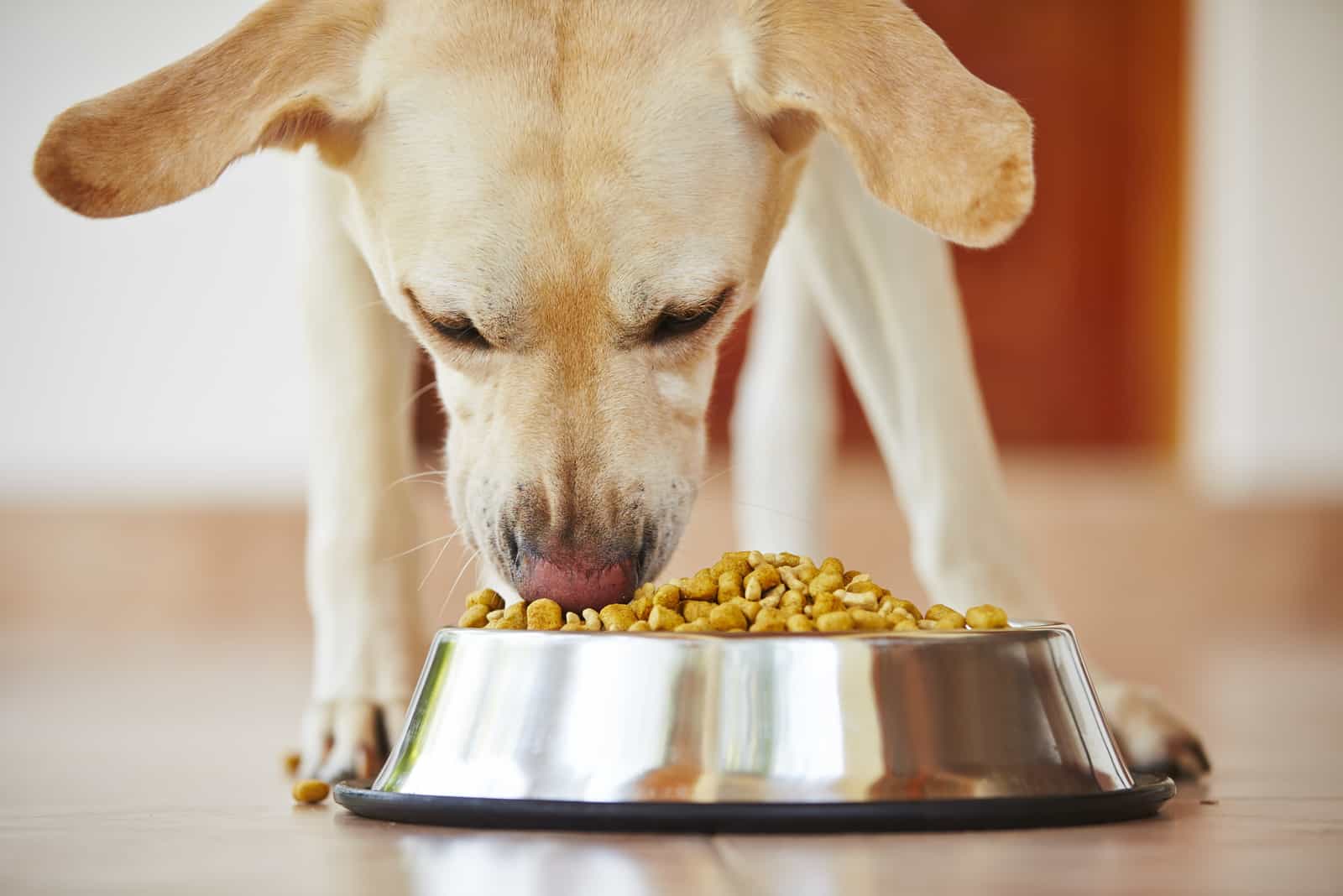
Some of you already have a puppy that is used to kibble and/or wet food, and you are wondering how to transition to raw food because of the benefits.
These kinds of transitions should be done gradually because they might upset your pup’s stomach. Any huge changes can cause disruption to your dog’s digestive system, so you should be careful about how you proceed.
• You want to first make sure that the raw food you are giving your dog is at around room temperature (and not frozen).
• For the next couple of days, you will want to slowly decrease the amount of the old food by replacing it with the new food until you have completely transitioned to the new raw food.
• For day one and two, you can feed your dog 75% of the old food and 25% of the new food.
• On day three and four, you can split it half-half—50% of the old food and 50% of the new food.
• For days five and six, you can give your dog 25% kibble/wet food and 75% raw food until you reach day seven, where you have completely transitioned to raw food.
If your dog needs more time to reach this amount, that is perfectly fine, especially if you realize that it is disrupting your dog’s digestive enzymes. If you see a certain amount is working for your dog, you can have it get used to it completely before decreasing the amounts of its old food.
What Kind Of Raw Food Diets Are There For My Puppy?
There are primarily three different kinds of raw food diets out there that dog owners follow: the BARF (Biologically Appropriate Raw Food), PMR (Prey Model Raw), and Ancestral diets.
The BARF diet consists of 70% muscle meat, 10% raw edible bone, 5% liver, 5% other secreting organ, and 10% vegetables and fruit. The BARF diet was created by Dr. Billinghurst.
The PMR diet consists of 80% meat, 10% bone, and 10% organ meat, with 5% of organ meats fed as liver, whereas the ancestral diet is compromised of 75% meat, 25% fresh vegetables, and some trace minerals. The ancestral diet was described by nutritionist, Steve Brown.
You will have to choose which diet works best for you and your dog if you want to make the next best step in its life.
Conclusion: How Much Raw Food To Feed A Puppy
We hope that we have answered all of your questions about how much raw food to feed a puppy. Whether you are transitioning or already feeding your dog raw food, we know that it can be difficult figuring out the ins and outs of feeding.
Just remember that any large decision in your pup’s life must be made by consulting an expert like a vet first. You do not want to start something on your own to the detriment of your pup’s health. Consult a vet—you’ll thank us later!
Read Next: How Long Does It Take For A Dog To Gain Weight?

